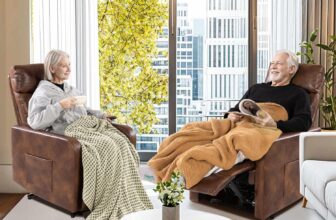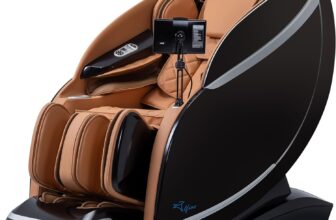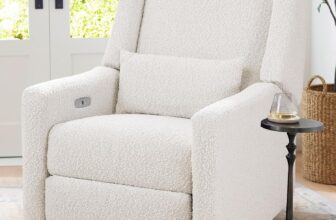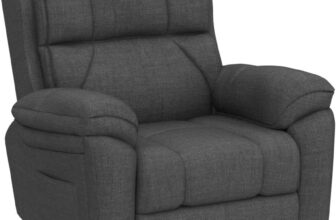4 Best Electric Recliner Chairs for the Elderly – 2026
Recliners Guide is reader-supported. As an Amazon Associate, I earn from qualifying purchases. Learn more about our process here.
Finding the right electric recliner for an elderly loved one isn’t just about comfort — it’s about safety, support, and ease of use. Look for smooth, quiet motors that transition between positions without jerks, and check if the remote is simple enough to operate without confusion. A lift-assist function can make standing up much easier, especially for those with mobility issues. Choose sturdy frames, preferably tested for higher weight capacities, and consider padded armrests for steady balance. Materials matter too — soft, breathable fabric or quality leather can prevent overheating during long sitting periods. Prioritize reliability over flashy extras.
4 Best Electric Recliner Chairs for the Elderly
(1) DYNOX 400lbs Lift Chair for Big & Tall Seniors Power Lay Flat Recliner
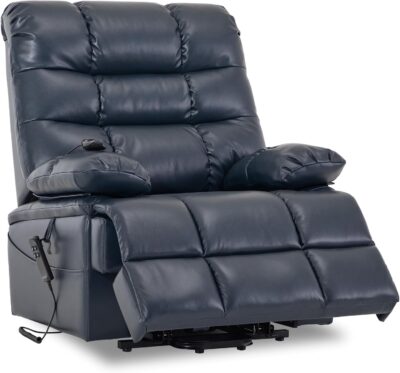
We’ve gone through our share of recliners, but this one really stands out for comfort. My husband is 6 feet tall, and usually his feet end up dangling, which makes it hard to truly relax. This chair, though, finally delivers — the footrest extender gives him full support, and he can actually stretch out without feeling cramped. The cushioning is spot on, too: soft enough to lounge in for hours but with enough structure that you don’t sink too far down. We had it assembled in under 20 minutes, and it felt sturdy right away. For anyone taller, I’d guess this could fit up to 6’6” or even 6’8” comfortably. It’s become his go-to spot for reading, watching TV, or sneaking in a nap. Honestly, I didn’t think a recliner could make this much of a difference, but it really has.
(2) MCombo Power Lift Recliner Chair with Adjustable Headrest for Elderly People
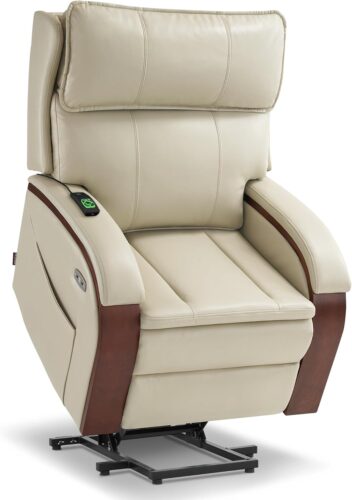
“We bought this recliner for our 93 yr mother, it has easy to understand remotes, one for heat/ massage and one for reclining & lifting up.” – purplelvr
I bought this recliner for my 69-year-old mother, and it’s been such a relief to see how much easier it makes her day. She struggles with mobility, and the lift function means she no longer has to strain to stand up — it’s as simple as pressing a button. Assembly was quick; I followed the video guide and had it ready in no time. The chair feels sturdy and supportive rather than overly soft, which is perfect for her back. The light massage adds comfort, and she paired it with a lumbar pillow for extra support. What surprised me most was how substantial it looks — even though we measured, it feels more luxurious in person. If you’re caring for someone older or recovering from surgery, this chair provides real support without feeling bulky or complicated. It’s one of those purchases that makes daily life genuinely better.
(3) MCombo Dual Motor Power Lift Recliner Chair for Elderly, Lay Flat Lift Chair
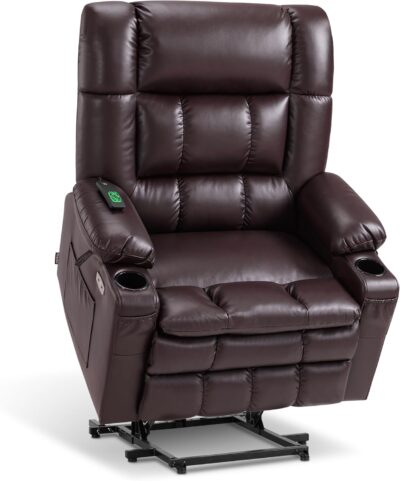
“So comfortable and with the dual motors…. I’m able to teak the position to always get into that comfort sweet spot.” – D Neumayer
I’ve had my new recliner for just over two weeks now, and it’s been a fantastic addition to my home. The build feels solid — nothing wobbly or flimsy — and every function works exactly as it should. The reclining angle is great for napping; I’ve actually been sleeping better in it than in my bed lately. The heat and massage features are a huge help for my back pain, and I appreciate that the massage automatically turns off after 30 minutes — perfect for dozing off without worrying about it running all night. Size-wise, it’s roomy enough for me and my oversized cat to curl up together, yet it still feels cozy. The upholstery looks high-end, the color fits right into my space, and setup was straightforward. For the price and quality, I wouldn’t hesitate to buy it again.
(4) MCombo Power Lift Recliner for Elderly with USB Ports, Cup Holders
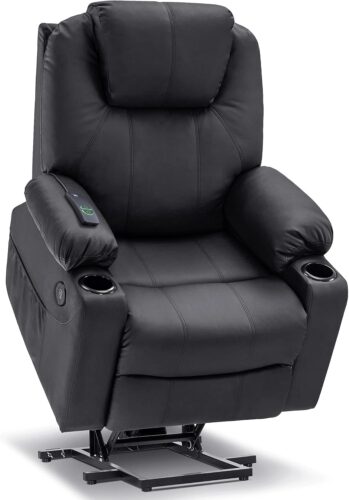
“Knees are shot, compression of lumbar, several bruised ribs – This chair if absolutely great!” – Mike Lewis
I’m an older gal, and I managed to put this recliner together by myself in under an hour. It comes in three boxes, and while the instructions aren’t fancy, they’re clear enough to get the job done. My trick was connecting most of the wires first and using the boxes as props — no tools needed. Once set up, I sat down and loved how it fit me (I’m 5’7″). It’s on the compact side, so taller folks might find it snug, but for average height, it’s just right. The lift function works smoothly, and having two separate plugs for lift and heat/massage is handy. The massage is more like a steady vibration with adjustable modes, which helps ease stiffness. The heat is subtle but noticeable over time. It’s firm yet comfortable, surprisingly quiet, and feels well-built. Honestly, I wasn’t expecting to like it this much — I might even buy a second.
1. Is the recliner easy to operate?
For elderly users, ease of operation isn’t just a convenience — it’s essential. Many older adults struggle with dexterity, vision, or arthritis, so the design of the control panel can determine whether a recliner feels empowering or frustrating.
Look for remotes with large, clearly marked buttons. Backlit options are particularly helpful in low light, and tactile differences — like raised or concave buttons — reduce accidental presses. Some newer recliners integrate side-panel controls, removing the risk of losing a remote entirely.
Equally important is how smoothly the chair transitions between positions. Jerky or slow movements can be uncomfortable, especially for those with hip or knee replacements. Smooth, steady motion provides confidence and prevents dizziness when moving from reclining to standing.
Take, for example, a Florida retiree who switched to a simplified lift recliner after finding her previous one overwhelming. “The old remote had ten buttons, half of which I never used,” she said. “Now, I can adjust everything with two.” That simplicity restored independence, allowing her to enjoy the chair without constant help.
An intuitive recliner also minimizes the learning curve for caregivers. When features are easy to locate — heat, massage, lift — everyone benefits. In short, the simpler the controls, the more likely the chair will be used daily rather than gathering dust.
2. Does it provide safe and steady lift assistance?
Lift assistance is one of the most critical functions in an electric recliner designed for seniors. It’s not merely about comfort; it’s about preventing falls and ensuring safe transitions from sitting to standing.
A proper lift mechanism should raise the chair forward and upward in a controlled motion. Look for UL-certified motors or chairs tested for weight capacity — many reliable models safely support between 300 and 350 pounds. Anything less can strain the motor and compromise stability.
Equally important is the base construction. Wide, reinforced steel frames reduce wobbling, especially on hardwood floors. Rubberized feet or non-slip pads can help prevent sliding, which is vital for users relying on the chair for leverage.
A real-world example: one caregiver recounted how her father’s old recliner jolted him forward, causing him to stumble during recovery from hip surgery. After upgrading to a model with a slower, steadier lift, incidents like that disappeared — and his confidence improved.
Noise is another consideration. A quiet motor reduces anxiety for those startled by mechanical sounds, especially at night. And backup power — often via battery — ensures the lift still works during outages, a feature particularly valued in areas prone to storms.
Ultimately, the best lift recliners feel seamless — safe, steady, and supportive — turning a daily challenge into an effortless routine.
3. Are the materials durable and easy to clean?
For elderly users, material choice is about far more than aesthetics. The right upholstery can mean easier upkeep, better comfort, and longer lifespan.
Real leather remains a premium choice for its durability and breathability. It ages gracefully, develops character, and resists tearing — ideal for households seeking longevity. However, it can be pricier and requires occasional conditioning. Faux leather, meanwhile, is budget-friendly and wipe-clean but may crack sooner with heavy use.
Performance fabrics have emerged as a middle ground. Stain-resistant microfibers and synthetic blends repel spills, an advantage for those who eat or drink in the chair. Many also resist pet hair and are machine washable, making them practical for multigenerational homes.
Cleaning ease is key. Smooth surfaces allow for quick wipe-downs, while removable cushion covers simplify deeper cleaning. Avoid materials that trap crumbs or absorb odors, especially in humid climates.
Consider the story of an older couple who downsized to a small condo: their microfiber recliner became their favorite because it survived daily use, visiting grandkids, and the occasional coffee spill — without looking worn after years.
When evaluating materials, feel them in person if possible. A surface that feels soft yet sturdy often signals quality craftsmanship, which ultimately saves money and frustration over time.
4. How comfortable is the heat and massage function?
Heat and massage are often advertised as luxuries, but for many seniors, they’re therapeutic essentials. Proper heat distribution eases stiff joints and muscle aches, particularly in colder climates or for those with arthritis.
The key question is coverage: does the chair warm only the lumbar area or the entire back? Full-back heat is ideal for relaxation, while localized lumbar heat targets lower-back pain. Temperature control is equally important; multiple heat settings accommodate different sensitivities.
Massage quality varies widely. Some chairs use vibration — soothing for light use but less effective for deep relief. Higher-end models incorporate rolling or kneading mechanisms that mimic professional massages. Adjustable intensity levels are critical; too strong can be uncomfortable, too weak can feel pointless.
Take a retiree recovering from knee surgery: her recliner’s gentle heat paired with low-intensity massage provided comfort during physical therapy sessions, making daily recovery less daunting.
Automatic shut-off features also matter, preventing overheating and conserving energy. Ideally, heat and massage can operate independently, so users can choose heat alone for winter nights or massage alone after long walks.
Ultimately, a recliner’s therapeutic features should feel supportive, not gimmicky — tools that improve daily well-being rather than simply adding bells and whistles.
5. Does the size suit both the user and the room?
Size misjudgments are common when buying recliners, especially for small spaces or shared rooms. A chair might look modest online but dominate a living room once delivered.
Measure carefully. Consider the wall clearance required for full recline; wall-hugger designs minimize this to as little as 4 inches, ideal for apartments. Check overall dimensions — height, width, and depth — and compare them to your doorway and floor plan.
Equally critical is personal fit. Seat depth affects posture: too deep, and shorter users slouch; too shallow, and taller users lack thigh support. A 5’2” grandmother and 6’2” grandfather will experience the same chair very differently. Look for models designed for a range of heights, often noted in specifications (e.g., “best for 5’4”-6’0” users”).
A retiree in Chicago shared how his first recliner “looked perfect online” but left his knees uncomfortably high — he later traded it for a longer-seat model better suited to his frame.
Lastly, consider visual weight. Slim-arm designs feel less bulky, even in small rooms. A well-proportioned recliner not only fits physically but also blends aesthetically, maintaining harmony in a carefully curated space.
6. Are safety and support features built in?
Safety often defines the best electric recliners for elderly users. Beyond lift mechanisms, look for details that protect against daily mishaps.
Stable bases are non-negotiable; a wide footprint reduces tipping risks, especially on uneven flooring. Chairs with anti-tip designs or reinforced frames inspire confidence during use.
Supportive cushioning matters, too. Medium-firm seats maintain posture and prevent “bottoming out,” a common complaint with overstuffed chairs. Built-in lumbar and neck support alleviates strain, crucial for extended sitting or napping. Adjustable headrests allow customization — a feature often overlooked until neck pain arises.
Cord management is another quiet hero. Tucked-away power cords prevent tripping hazards, while battery backups keep essential functions running during outages.
Consider the case of an older man with limited mobility whose recliner failed mid-lift during a storm. His newer model, equipped with a backup battery, kept functioning — sparing him an unsafe struggle.
For households with pets or grandchildren, easy-to-clean surfaces and hidden mechanisms add extra layers of safety. These details, though subtle, often make the difference between a chair that’s simply comfortable and one that feels genuinely secure.
